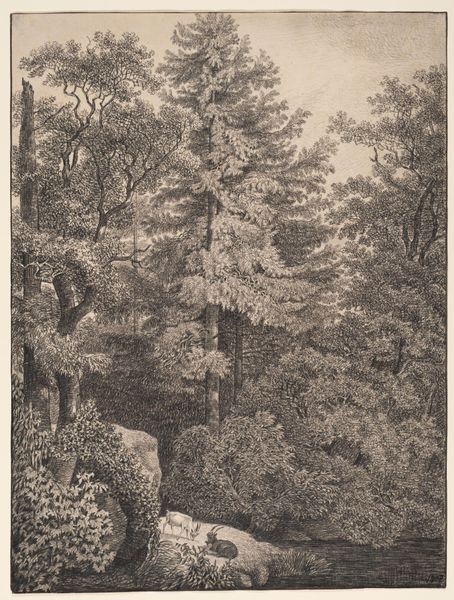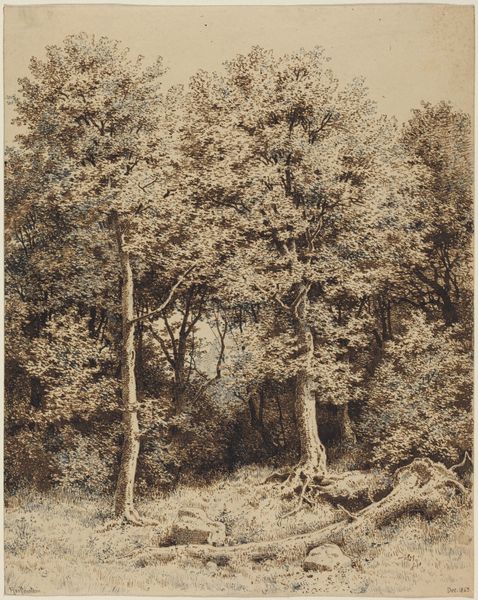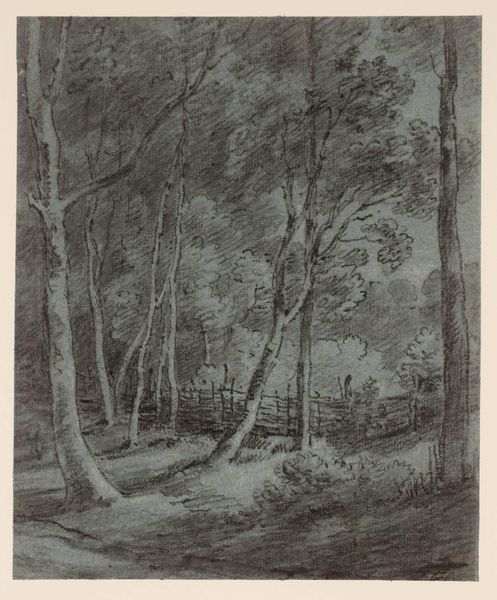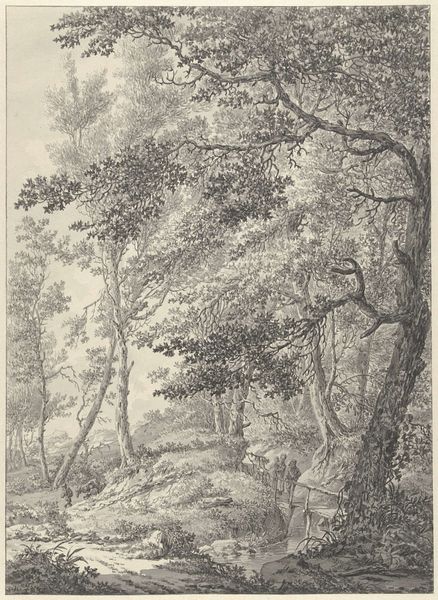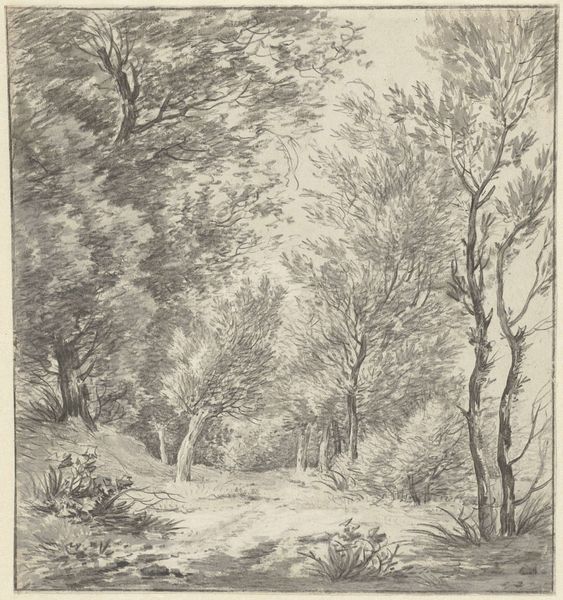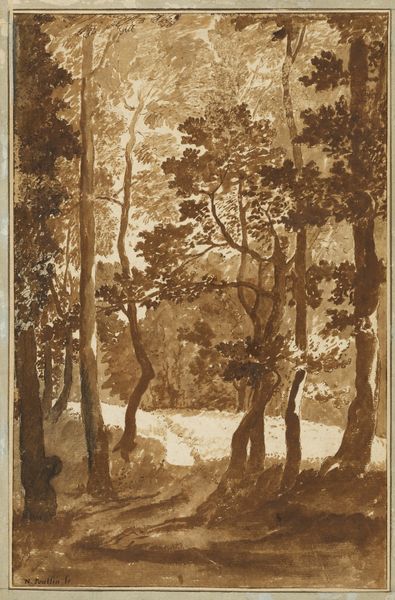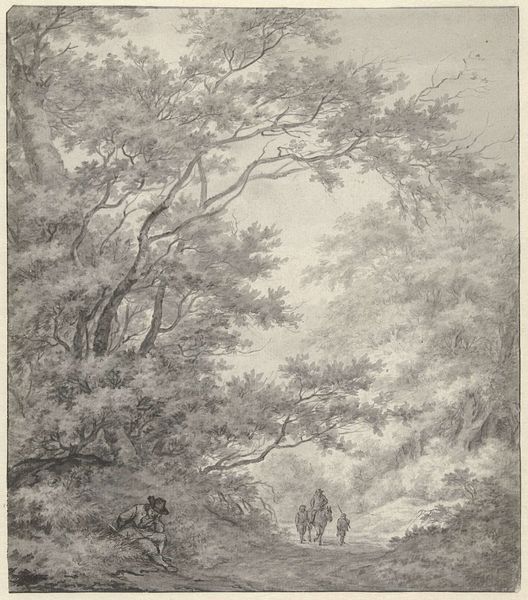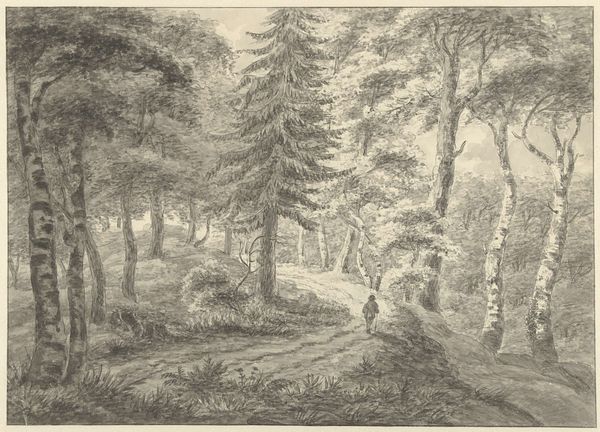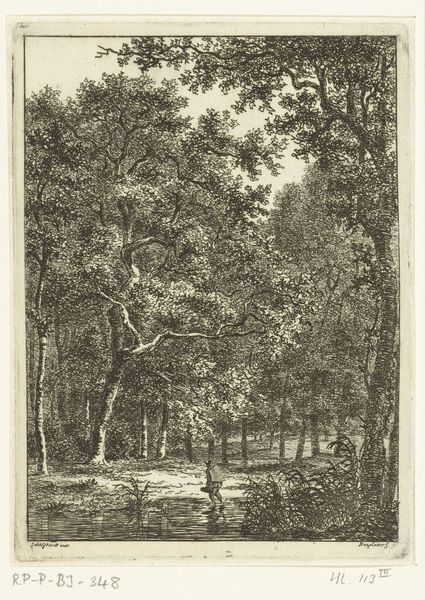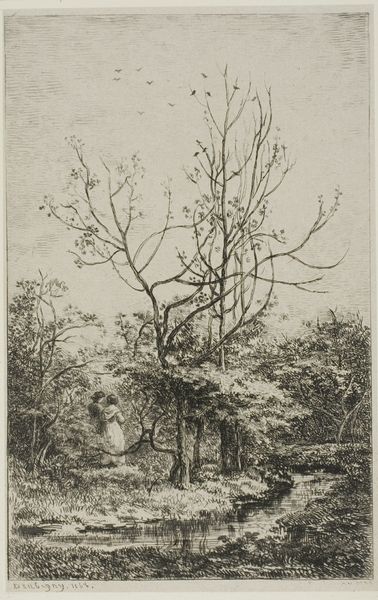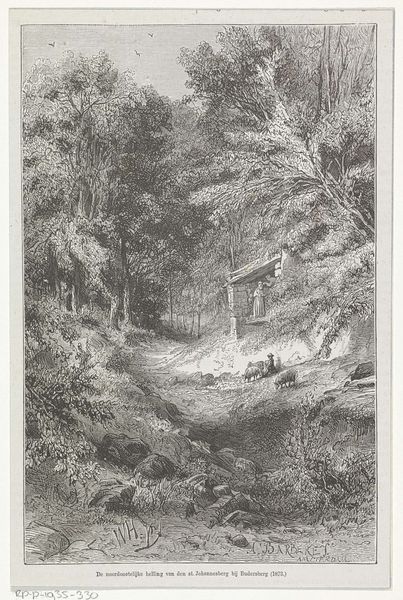
drawing, etching, pencil, engraving
#
pencil drawn
#
drawing
#
etching
#
pencil sketch
#
landscape
#
pencil drawing
#
romanticism
#
pen-ink sketch
#
pencil
#
engraving
Dimensions: height 333 mm, width 247 mm
Copyright: Rijks Museum: Open Domain
Curator: Here we have "Two Wood-Bearing Figures in the Forest," a drawing by Jan Willem van Borselen, dating from somewhere between 1835 and 1862. It resides here at the Rijksmuseum. What's your immediate take on this piece? Editor: My immediate feeling is one of hushed observation. There’s this deep, almost primordial forest, rendered so intricately in pencil, and the two figures seem like just a fleeting part of it all. There is such fine detailing. It makes you consider what their tiny life inside it may feel like! Curator: That sense of smallness is key. The figures, burdened by wood, are almost swallowed by the landscape. Note the trees; they aren't just trees, they’re symbols of enduring strength, resilience, the guardians of a silent space. Wood-bearing could itself carry meaning of sacrifice or necessity of toil. Editor: Yes, exactly! And even though it’s just a drawing, there’s a certain heaviness to the air, don't you think? It’s like you can feel the dampness of the forest floor and imagine the weight of that wood. Are they mother and daughter perhaps? Maybe heading home for fire to fight the darkness! Curator: Romanticism at its finest. These weren't simply landscapes; they represented the artist’s emotional response to the natural world. The forest itself became a space for contemplation, away from the hustle and bustle of 19th-century life. Those ravens could carry spiritual meaning for Jan, could they? A calling card from something greater than daily human life? Editor: It is compelling... you put it so beautifully, and now I see those dimensions you have added even more vividly. Looking closely, you can see how carefully constructed the perspective is, pulling your eye deeper into the woods. It's a masterful balancing act of nature and human experience! I am glad to have encountered that.
Comments
No comments
Be the first to comment and join the conversation on the ultimate creative platform.
